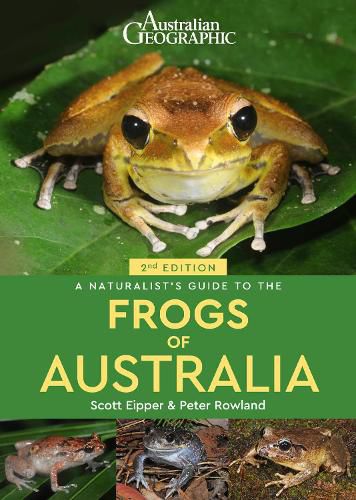Readings Newsletter
Become a Readings Member to make your shopping experience even easier.
Sign in or sign up for free!
You’re not far away from qualifying for FREE standard shipping within Australia
You’ve qualified for FREE standard shipping within Australia
The cart is loading…






A Naturalist's Guide to the Frogs of Australia is an introductory photographic guide to the 247 species and 9 subspecies of frog most commonly seen in Australia, and is perfect for resident and visitor alike.
High quality photographs from Australia's top nature photographers are accompanied by detailed species descriptions, which include nomenclature, size, distribution, habits and habitat. The user-friendly introduction covers the geography and climate of Australia, types of habitat, and details of orders and families. The second edition includes eight new species, updated taxonomy and numerous new photographs. Also included is an up-to-date checklist of all of the frogs of Australia encompassing, for each species, its common and scientific name, its presence in a particular state or territory and its global IUCN status as at 2018.
$9.00 standard shipping within Australia
FREE standard shipping within Australia for orders over $100.00
Express & International shipping calculated at checkout
Stock availability can be subject to change without notice. We recommend calling the shop or contacting our online team to check availability of low stock items. Please see our Shopping Online page for more details.
A Naturalist's Guide to the Frogs of Australia is an introductory photographic guide to the 247 species and 9 subspecies of frog most commonly seen in Australia, and is perfect for resident and visitor alike.
High quality photographs from Australia's top nature photographers are accompanied by detailed species descriptions, which include nomenclature, size, distribution, habits and habitat. The user-friendly introduction covers the geography and climate of Australia, types of habitat, and details of orders and families. The second edition includes eight new species, updated taxonomy and numerous new photographs. Also included is an up-to-date checklist of all of the frogs of Australia encompassing, for each species, its common and scientific name, its presence in a particular state or territory and its global IUCN status as at 2018.